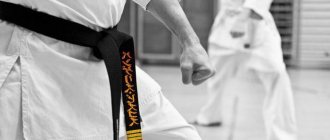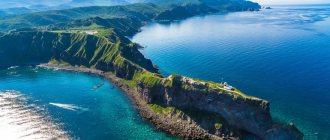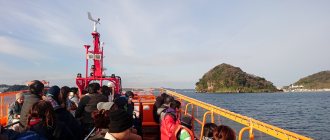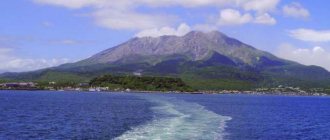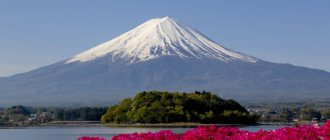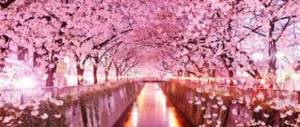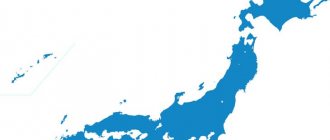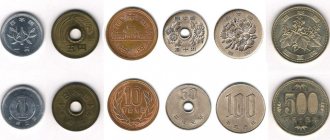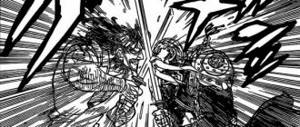Cities in Hokkaido
Hokkaido is simply not as large and densely populated as Honshu, for example, mainly due to its vast and unspoiled nature. You won't find huge cities with millions of inhabitants here. However, there are a number of cities that you should visit if you decide to travel around Hokkaido. These include the capital Sapporo, the romantic port city of Otaru, historic Hakodate and Japan's northernmost place Wakkanai.
Sapporo
Sapporo is the fifth largest city in Japan. Almost 2,000,000 people live in the island's capital. Sapporo is very similar to other major cities in Japan. There are many modern high-rise buildings and infrastructure here. Sapporo is much greener than Tokyo or Osaka, for example. The city has wide avenues with extensive city parks. Did you know that this city is mainly (internationally) known for its beer? Sapporo breweries are highly recommended for lovers of good beer. In addition, a beer festival takes place every year in July and August, and in winter sculptors compete to build giant ice palaces and ice sculptures.
Otaru
Otaru is by nature a port city. This gives the city a romantic and historical character. The city has beautiful canals and authentic department stores thanks to the centuries-old commercial culture that prevails there. It's almost like a small, Japanese version of the canals of Amsterdam! This town has a unique Victorian feel with canals, department stores and historical accents such as lampposts. In winter, it's nice to see the Otaru Snow Light Festival or the Nikka Whiskey Yoichi Distillery (very tasty Japanese whiskey)
Hokkaido is a wild and vast island with a variety of nature. You will find wild bears, wolves and other animals unique to Japan
Hakodate
Hakodate is the first city you'll encounter in Hokkaido when you arrive by ferry from Honshu. This city is also famous for its so-called morning market. Here you will find the most exotic types of fish and fruits. Not far from Hakodate there is a vast nature reserve called Umanuma National Park, where many monkeys live in winter. In the city of Hakodate in 1854, with the help of the Dutch, a fort was built.
Goryōkaku Fort (五稜郭, Goryōkaku), which is based on the Western star-shaped design.
Wakkanai
Population 44,000 people.
Wakkanai or "Windy City" is the northernmost city of Hokkaido and therefore also Japan. In winter it is much warmer here than in Yuzhno-Sakhalinsk, but the Japanese consider it a pole of cold. In the autumn and winter months, seals swim here. From May to November, you can also visit the other Wakkanai islands by ferry. It is also home to the indigenous Ainu community. The Ainu are a people, the oldest population of the Japanese islands.
Distinctive features of the Ainu culture.
From June to September (sometimes from May to October - depending on natural conditions) ferries run regularly to Sakhalin (to the city of Korsakov). Many residents know a little Russian.
Three scary stories from Hyakumonogatari Kaidan
Dependence of the local economy on budgetary enterprises
However, plans for the development of Hokkaido, adopted at different times, aimed at increasing the population, complicating the industrial structure and economic growth, as well as attracting enterprises from regions with developed industry, did not fully live up to expectations. On the other hand, the expansion of development activities in Hokkaido resulted in a strict dependence of the region's structure on public utilities.
Later, in the 1990s, the importance of government support for Hokkaido's development in national politics declined due to the end of the Cold War and the internationalization and globalization of the economy. With the reform of the state apparatus carried out in 2000, the exclusivity of this region in the overall development system became less noticeable, and the Hokkaido Development Agency was transferred to the Ministry of Land, Infrastructure and Transport, where it became one of the ministerial bureaus.
Hokkaido, as a separate administrative unit, informally had a complementary relationship with the central government, being one of the parties to the development system. Both parties built partnerships in which they sought to ensure the greatest budget funding, the implementation of projects in Hokkaido aimed at its development, and shared profits and losses in this cooperation. However, from the second half of the 1970s, the conditions in which the partners found themselves led to divergences - the national government had the goal of developing the governorate as part of national policy, and the authorities of the governorate in implementing a wide range of policies directly depended on the aspirations of the inhabitants of the region, and their goals were not coincided with the government's goals.
During the existence of the administrative unit, the governors of Hokkaido, regardless of their party affiliation, pursued their own political course aimed at solving the problems facing them, and innovations implemented in Hokkaido often pointed the way for the rest of the country. Thus, in Hokkaido, regulations were introduced to assess the impact of production on the environment, public housing was built with a system of care for the sick and elderly, a system for revaluing public works was introduced (*1), and a special administrative system, doshusei (*2). Governors sometimes solved the problems of the region in cooperation with the national government, and at times entered into confrontation with it, defending the special interests of the region.
However, recently, due to financial difficulties, the Hokkaido administration has been actively reducing the staff of its employees and their pay and is less likely to come up with new initiatives. In addition, the process of transferring jurisdiction to the new doshusei system, due to the inertia of the central authorities, practically does not bring results. This is compounded by the ineffectiveness of local government reform within the governorate, and at present there are no clear plans for the development of Hokkaido as a region.
Nature of Hokkaido
Hokkaido, like the rest of Japan, is very mountainous. This coupled with the cold weather during the winter months means that the weather on this island has huge contrasts. Temperatures can reach 30 degrees in summer and cold enough in winter to practice all types of winter sports.
Everything you know about ninjas is wrong!
Hokkaido National Parks
In Hokkaido you will also find a number of so-called national parks. Take Akan National Park for example. This national park is truly unique. Here you will find volcanoes, bubbling lakes and dense forests. You can simply wander through the forest breathing deeply, or engage in other outdoor activities such as rafting, rock climbing, cycling, fishing.
Hokkaido is home to Japan's most pristine wilderness area, Shiretoko National Park . You will only be allowed here if you prove that you are an experienced traveler or adventurer. Here you will also find many volcanoes, mountains and geysers. Are you not an experienced hiker but still want to visit Shiretoko National Park? Then you can go hiking with a group or book a bus trip through the reserve.
Some other beautiful parks are Takino Suzuran Hillside National Park, Lake Onuma, Onuma Quasi-National Park and Toya Caldera and Usu Volcano Global Geopark.
History of Hokkaido
Like the rest of Japan, Hokkaido has a rich history. It is important to note that since Hokkaido has never had many inhabitants, no significant events have occurred here either. However, the history of the island is very interesting and there are many traces of the past that can be found today.
Kyushu Island (九州)
About 20,000 years ago the island was first inhabited. The people who came to live here were the Ainu Moshiri. They lived until the 16th century completely separated from the rest of Japan. Hokkaido had almost no contact with the rest of Japan. Since the 17th century it has increasingly become part of Japan. For example, the 1970 Winter Olympics were held in Sapporo, and a bill was passed in 2008 to protect and preserve Ainu culture.
Joint search for hidden reserves
To realize Hokkaido's full potential, connections must be strengthened and expanded both within and outside the governorate. The social capital accumulated so far should be used effectively; figuratively speaking, you need to install new “software” on existing hardware. One of the advantages of Hokkaido is its exceptional geographical location, because it is located at the crossroads of sea and air routes from East Asia and the more southern regions of Japan to North America and Europe, while there are more than enough opportunities for the development of air and sea transport. The launch of the Hokkaido Shinkansen line, planned for 2021, will also help to develop these capabilities to the maximum and turn Hokkaido into one of the most important air and sea ports in the Northern Hemisphere.
Among the populated regions of Hokkaido, there are those that could be made more compact and densified, as well as those where settlements are scattered over a wide area due to the socio-economic structure of the region. Taking into account these characteristics of different regions, it is necessary to create and develop a network of communications that connect them, linking them to “hardware”, that is, the road transport network, new “software”, that is, communication, logistics, disaster protection, medical care and etc.
Housing
Are you planning a trip to this beautiful island? Then it is important that you find suitable accommodation. Luckily, there is no shortage here in Hokkaido. Cities like Sapporo and Otaru offer a variety of hotels and hostels. There are also many accommodation options around nature reserves. It is important to reserve on time, then you will pay less and be sure of an overnight stay. The picturesque landscape has many campsites and open parking areas.
Why is it dangerous for bachelors in Japan to pick up a red envelope from the ground?
NOTES
to the essay “Shogun *** and Seyi Taishogun ***”
Ezo *** and Hayato ***
EDZO ***
Note on the expression sei Echigo edzo shogun
***
in the article “Shogun *** Special military ranks”
In the words emishi, ebisu, edzo
***, which later became synonymous with the concepts of “savage”, “barbarian”, denoted in Japan all the inhabitants of the country, foreigners who, having established themselves in the western-central part of it (the regions of Yamato ***, Yamashiro *** etc.) , gradually extended their rule over the entire country;
Mainly, these words in ancient times denoted the foreigners of the regions of Mutsu ***, Dewa *** and the present island of Ezo *** of the entire northeastern part of Japan. Regarding these emishi (ebisu, edzo)
*** there are several versions of (supposed) interpretations
1 .
1. That these were all the aborigines of the country, who did not want to submit to the rule of the aliens (Japanese), who fought with them, were eventually pushed to the far north and moved to the large northern island of Watarijima ***, the present island of Ezo ***, where they descendants remain to this day ( Ainu,
or
Aino
***, as they call themselves).
2. That these were the aborigines of Ezo Island, who later moved to the north of the large central island of Japan and fought with the Japanese.
3. That it was some kind of tall, strong and courageous tribe, probably of the white race, it is unknown whether it lived in the country for a long time or came later.
4. That it was only one of the tribes, the aborigines of the country.
The very word emisi,
or, as some read it,
emiji,
with its hieroglyphic mark *** was the ancient name of these foreign savages, and in the Middle Ages was replaced by the word
edzo
of the same mark *** as
emishi.
According to the Japanese scientist
[85]
Motori Norinaga in his “Kojikiden” ***
2 , the origin of the word emishi
and its style *** is in connection with the word
ebi,
or
emi
***
3 - “small sea crayfish, shrimp”, to which these savages were likened due to the fact that they had abundant facial hair (protruding like the legs of a cancer). Then, according to his explanation, the word emishi
was perverted by pronunciation in
ebisu 4 ,
and then the word
ebisu
began to be considered exclusively as
kun
*** (purely Japanese reading) of the hieroglyphs *** and *** whose ideographic meaning is “savage”;
the mark ***, instead of the previous reading emishi,
they began to read
edzo,
and this reading
of edzo
appeared only in the Middle Ages, but it is not found in ancient books.
At the same time, explaining one part of the word emishi,
namely
ebi, emi,
and the transformation of the word
emishi
into
ebisu,
Motoori refuses to give a conclusion whether the word
edzo
a perversion of the word
emishi
or whether they are completely different words.
The above explanations may, of course, have some basis, but it is also possible that the word emisi
(
emiji
) has a connection with the words
imu
(***)
-
“to avoid”, “to feel disgusted”, “to hate” and
imi
(***) - disgust, hatred, and that all these savages were simply called “disgusting creatures ", "hated creatures", which they really were for the Japanese.
In all likelihood, the word emishi (emiji
) is a parallel concept, namely a combination of the words
imi
and
si (ji
).
The word si
is some kind of ancient word that has now lost its basic meaning, which cannot be explained, which in the form
si, ji
and
su
is included in a number of other words as an educational word and has the approximate meaning of “being”.
This si, ji, su
served to form various words expressing, in general, the concept of “an actor of one kind or another”;
for example, karasu
*** - “raven” (
kara, kara
- the sounds of a raven cawing),
kirigirisu
*** - “grasshopper” (
kiri, kiri
- the sound made by a grasshopper),
kigisu
***
,
which later changed into
kiji
** * - “pheasant” (
ki, ki
- the cry of a pheasant),
kakashi
*** - “garden, field
howling scarecrow" (the word kaka
inexplicably), etc. Thus, the words
imi
and
si
could give the combination
imishi (imiji
) in the sense of “disgust-creature”, “hatred-creature (creatures)”, i.e. creatures that excite disgust and hatred; in short, disgusting creatures, hateful creatures.
Regarding the change of the word imishi
in
emisi,
it could be obtained by replacing the sound “i” in the word
with
the sound “e”.
The confusion of the sounds “i” and “e” with their mutual replacement is preserved in the dialects of the Japanese [86]
language, especially in the dialects of the northern regions of Japan, and still occurs today, giving rise to many misunderstandings;
for example, enu
instead of
inu
*** - “dog”,
eru
instead of
iru
*** - “to enter”.
Therefore, the sound “and” in the word carried
labor with them; due to the unclear pronunciation, it could turn into the sound “e”;
it could even be that the first person to write down this word wrote down “e” instead of “i” simply due to his own pronunciation, without realizing the origin of the word. In a word, in one way or another the transition of the sound “i” of the word by them
into the sound “e” could have taken place, thus
giving emi
instead of
them
and
emisi
instead of
imisi
in the meaning of “disgusting, hateful creatures.”
However, the word emisi
did not, in turn, remain without changes, which were expressed for it in the fact that, having changed in some sounds, it seemed to highlight its change from itself, namely the word
ebisu -
perversion (
namari
***), as Japanese scientists call it , the word
emisi
, this perversion was achieved by replacing the sound “m” with the sound “b” and the complex sound “si” with the sound “su” in the word
emisi
.
The mutual replacement of these sounds, which has been very characteristic of the Japanese language since ancient times, is still common today (dialects); for example, samurai
and
saburai
*** - “combatant”;
Samisy
and
Sabisy
*** - “sad”;
sisi
instead of
susu
*** - “soot”,
susu
instead of
sisi
***
-
“lion”;
shisu
instead of
sushi
***
-
“rice roll”, etc.
It is possible that further changes to the word emisi
expressed in turning it into the word
edzo.
If this was the case, then the evolution of this change probably occurred not directly, but through the word
ebisu,
namely by the transformation of the complex sound “bi” into a simple nasal “n” and the elimination of this latter with the accompanying change of pure “su” into the muddy “zo” . But all this is guesswork.
Thus, to denote the concepts “barbarian”, “savage”, and specifically “barbarian, savage of the north-eastern part of the country”, there were three words emisi, ebisu
and
edzo.
Of these, the most ancient is
emishi,
the next and also ancient is
ebisu,
both of these words existed side by side;
the youngest is edzo,
a word that has been around since the middle of the 7th century.
replaced the ancient word emishi,
remained to exist along with the word
ebisu
and survived until the present time, eventually becoming the name of the former Watarijima *** island (now the territory of Hokkaido *** where these
emishi, ebisu, edzo lived.
Chamberlain in his translation The Kojiki questions both the role of the meaning "barbarian crayfish" in the word
emishi
***
and the authenticity of the very existence of the ancient word
emishi,
" the so-called ancient reading yemishi."
As for hieroglyphic designs, for the words emisi
and
there
were several of them;
for the word edzo
- one.
[87]
1. Amici
:
*** - phonoideographic; the most ancient style found in the Kojiki *** and at the same time the main style of the word emishi
;
| *** - phonoideographic with perversion *** into ***; *** - phonoideographic with replacement of *** through ***; *** - phonetic; *** - phonetic; | in "Nihongi" ***, "Shokunihongi" *** and subsequent works. |
2. Ebisu
:
| *** - phonetic; *** *** - ideographic; | in works after the Kojiki and Nihongi |
3. Edzo
:
| *** - inherited from the word emisi or random (without clearly expressed descriptive character) | from the Middle Ages (half of the 7th century). |
Of all these styles, the only one of interest is the ancient main style ***, in which several heterogeneous demands were concentrated at once, namely: 1) the desire to give reading at least one part of the entire word emisi,
which is achieved by the phonogram ***, which is read by kun
as emi (ebi);
2) the desire to give a descriptive (ideographic) meaning of at least one part of this word, which is achieved by the ideogram ***, the ideographic meaning of which is “savage”, “barbarian”, and, finally, 3) the desire to capture in writing what may be evil wit , which was refined over the content of the concept of the word
emisi,
which was achieved by the entire phonideogram which, regardless of its reading
(emisi),
has the entire ideographic meaning “cancerous savage”, “cancerous savage (barbarian)”.
And the choice of the hieroglyph *** ebi (emi)
- “cancer” in the composition of this outline can hardly be attributed to the idle imagination of the compiler of the outline *** -
emisi,
which, precisely by its bias, best proves that it was created for the word
emisi
too post factum, when the true meaning of this word was already forgotten, due to which it could become the reason for witty comparisons like the above, and this, in turn, can be proof of the extreme antiquity of the word
emisi. [88]
The shapes of the word ebisu are so clearly self-explanatory that there is no need to dwell on them. As for the style of the word edzo, it was either passed on to this word by inheritance from the word emishi, if edzo is a change of emishi, or it was adapted to the word edzo by chance, as a style that served the word (emishi), which expressed the same concept as new word edzo. Now the mark *** reads:
- emisi - in the meaning of the ancient name of savages (before the Middle Ages);
- edzo - in the meaning of the later name of the same savages (from the Middle Ages - half of the 7th century);
- Ezo - in the meaning of the later name of the northern large island of Japan, the former island of Watarijima ***.
First mention of edzo (emishi)
*** found in the records of Emperor Keiko *** (71-130)
5 , under which Takeshiuchi (no) Sukune ***, after his two-year survey of the eastern countries, made a report “that in the east 6 there is a country in which the sun is visible high - hidakami-no buy
***
7 , a vast country, with fertile lands, that they call it emishi
*** and that it must be mastered,” and under which Yamatodake (no) Mikoto *** first took up arms against these emishi and conquered them
8 . This legendary attack against the emishi (edzo)
marked the beginning of a long and persistent struggle against them by the people of Yamato -
Yamato minzoku
***, which ended in truly complete subjugation
of the edzo,
and the outstanding moments of this struggle in brief are as follows.
Beginning around the 490s, edzo
partially began to recognize their dependence on the Japanese and appear within the empire, and in the 650s the imperial government even arranged a treat for such conquered
edzo
, and in the period 650-661.
Japanese military leader Abe (no) Hirafu *** established himself in two places in northern Japan: Nushiro *** (Deva region ***) and Tsugaru [89]
(Mutsu region ***
9 ); then, crossing to the island of Watarijima 10 , he smashed Ezo
and, finally making his way further, established himself in Siribashi ***
11 , thus laying the foundation for his possession of the eastern outskirts.
In the subsequent time Ezo
more and more began to submit to the dominion of the Yamato people, but their outbreaks did not stop, which is why the war with them did not stop.
the edzo
was especially vigorous in the period 709-724, for which plenipotentiary governors were appointed, such as, for example,
Mutsu tinto shogun
*** - governor Mutsu - pacifier of the east;
sei Echigo (no) edzo shogun
*** - governor - punisher of
the Ezo
region of Echigo;
jisetsu taishogun
*** - great commander with a granted sword, etc.
After this time, i.e. from the 725s, the so-called chinjo
*** - “place of pacification”
12 (in the Mutsu region), a polysadic fortification was built in the Taga area *** (same region) and all efforts were made to pacify and calm the edzo, which was crowned with significant success, expressed in massive subjugating them. However, the Ezo
were far from being completely subdued and pacified;
They rose up here and there more than once, and their outbursts were very energetic. The first such outbreak after the establishment of chinjo
was in 774;
she was suppressed by the commander of pacification and defense - Chinju Shogun
***, Otomo Surugamaro ***.
Then a whole series of them followed, and in 780 the Ezo
killed the regional auditor -
the Azechi
*** captured various Japanese fortifications and set fire to the warehouses of the Taga fortification (castle), which fell into their hands.
Azechi (according to other readings, azetisi,
or
ansatsushi 13 ) *** were called special government officials of a fairly high rank, regional auditors for local (in regions) government affairs, whose duties lay the highest direct supervision over local government bodies in the regions, the actions of government officials and the life of the people, and they were entrusted with certain administrative and judicial powers, namely: to promote in positions, dismiss from them and sentence to various punishments not higher than forced [90]
labor.
This non-permanent position was established in 719 for all regions, but by the 780s it had already been abolished and was retained only for the regions of Mutsu and Dewa. The azechi
of the Mutsu region was first mentioned in the 720s, when
the azechi of
was killed by edzo .
In 763, for the first time, one person (Fujiwara Tamuramaro ***) was appointed as the regional auditor of two regions, Mutsu and Deva - Mutsu Dewa (no) azechi
***, subsequently this position began to be combined in one person along with the positions of the ruler of the region -
kokushu
(
kuni no kami
) *** and the head of the defense department -
chinjufu shogun
***
14 , and finally later, when the defense of the outskirts was abandoned ( by the 11th century), it became an empty official title, combined with the title of Secretary of State - Nagon
or State Councilor -
Sanga
***.
Ezo's performance noted above
in 780, which began with the murder
of azechi,
flared up into a real war, in which Japanese troops were defeated more than once.
In 788, Ki (no) Kosami ***, having received the title of seito taishi
*** - the great ambassador - the punisher of the east, went against
edzo
with an army of fifty thousand, but had no success, which is why a new military leader, Otomo Otomaro **, was appointed *, with the title of
sei taishogun
***;
he defeated the Ezo
in 794, and in 801 the regional auditor of Mutsu and Dewa, Sakanoe Tamuramaro ***, who also received the title of
sei taishogun,
penetrated deep into the country, ravaging the indigenous dwellings of
the Ezo there,
and in the next year, 802, built Izawa Castle *** in the Mutsu region
,
where he moved the residence of the defense department -
Chinjufu
***.
This is chinjufu
*** - nothing more than the above-mentioned
tinjo
*** - a place of pacification, the residence of the garrison, but more decorated and given its own special name.
Realizing that it was difficult to cope with edzo
without a permanent stronghold, the Japanese built in the period 724-728.
palisade fortification Taga - Taga (no) saku
***, which later became the castle Taga -
Taga (no) jo
***.
“The military commanders garrisoned this palisade whenever they were sent to act against Ezo
;
in addition, guard soldiers were always placed in it, who were called tinju (no) hei
*** - warriors of pacification and defense
15 , and the palisade itself began to be designated by the word tinjo
***
16 ". The military commander of this garrison was called chinju shogun
***
-
commander of pacification and defense
17 . However, as notes [91]
“Kokushi Daijiten” ***,
“tinjo
probably already existed before 722, since the first mention of it (as something already known) is found in the record of “Shokunihongi” *** relating specifically to the events of this year;
as for the chinju shogun,
this term is found in the entry of the same work about 729.”
Then tinjufu
- the place of pacification received a permanent organization and turned into
tinjufu -
the department of (pacification and) defense, headed by
tinjufu shogun
*** - the head of the defense department.
There is no exact indication of when exactly this transformation took place, but judging by the fact that the Shokunihongi entry relating to the events of 739 mentions the expression chinjufu shogun,
it should be concluded that the establishment
of chinjufu
probably occurred in the period 729-739 .
Kita-batake Chikafusa *** in his “Essay on the Origin of Positions” 18 says: “In the period 724-728, having established Chinjufu
in the Mutsu region, for the first time they began to appoint and send (there) governors (
shoguns
***).
So isn’t this the beginning of the establishment of military rule ( gumpu
***) in the country?
When cases of punishment of barbarians, etc. arose, they (military leaders) were appointed for a time, and the existence of this administration ( fu
***) was not heard
of 19. ” Tinjufu
had a military organization and its own special staff;
its residence was first Taga Castle, then Izawa Castle *** ,
and finally it was moved to Hiraizumi Castle ***, where it ended its existence when Minamoto Yoritomo *** became the only
sei taishogun
*** for the whole Japan (1192).
However, the title of head of this department, long before this time, had become simply an honorary title, without real functions and power. Emperor
chinjufu
in 1336
20 as its head ,
at whose request the title
of chinjufu shogun
*** was changed to
chinjufu taishogun
*** - great chief (voivode) of the defense department
21 but soon, precisely with the beginning of the Ashikaga shogunate *** (1338), this entire institution and its titles were completely destroyed. Another stronghold against Ezo
was in the Akita castle -
Akita (no) jo
*** Deva region, where a palisade fortification was also first built in 733.
The institution whose residence was this castle was called Akitajo no Tsukasa
*** - the order of Akita Castle.
, the suke
began to be in charge of the military organization of the castle , which is why these vice-rulers began to be called
[92] Akitajo no suke
*** - vice-ruler of Akita castle, or abbreviated
jo no suke
** * - vice-ruler of the castle.
With the emergence of the Kamakura shogunate - Kamakura bakufu
*** (1192), this title turned into an empty honorary title and became hereditary to the Adachi family ***, and then passed to other surnames
22 and existed in this form until the Edo shogunate - Edo bakufu
*** (1603).
After moving the Chinjufu
to Izawa Castle in 802, they began to build fortifications in other places, garrisoning them all from various people inconvenient within the empire, who were resettled from there.
The Ezos
did not stop resisting;
the war with them did not stop, and there were moments (811) when imperial decrees declared that “the integrity or destruction of the state depends on whether the troops of the imperial government or the troops of the barbarians defeat”, and it was confirmed to the military leaders and everyone else that they would strain all my strength in the fight against Ezo.
This went on until 1056, when the leader of the local
edzo
, Abe Yoritoki ***, rose in the Mutsu region, whose worthy successor was his son Sadato ***.
The fight against them, actually against Sadato, was very difficult and required nine years of intense effort on the part of the Japanese commander Minamoto Yoriyoshi ***, which is why it received the name Zen kunen no tatakai
*** - “the war of the previous nine years” (1056-1064) .
Soon after this, another stubborn war began, the war of the next three years - gosannen no tatakai
*** (1083-1085), in which Minamoto Yoshiie ***, the son of Yoriyoshi, acted against Kiyowara Takehira ***, who led
the edzo
region of Dewa
23 . After these two wars, which were crowned with success for the Japanese, the edzo
were broken and ceased to be a formidable danger to the state;
The last blow was dealt to them in 1189 by Minamoto Yoritomo *** with his successful campaign against the powerful ruler on the eastern outskirts, Fujiwara Yasuhira *** ,
who, relying on local
edzo,
became almost independent.
After this campaign, the regions of Mutsu and Dewa became virtually all Japanese possessions, the possessions of the imperial government 24 .
After the defeat of Yasuhira, his various commanders and warriors scattered and took refuge in the lands of the barbarians; some of them crossed to the island of Watarijima
***
-
“crossing island”, which is why they were nicknamed
Watarito
*** - “crossing party”.
This, in fact, begins [93]
the colonization of the island of Watarijima, which was then supported by a continuous, albeit small influx of settlers, mostly forced, exiled to this island for various offenses.
From this same time, in fact, the gradual subordination of the edzo
of this island to the general institutions of the country began, achieved gradually precisely through these same exiles, whose descendants, having formed a higher wealthy class in new places, nicknamed by the common name
sekanshu
*** - “various owners of chambers ( lands)”, began to quietly extend their power to
Ezo
, and at the same time began to counteract their separatist aspirations, even going so far as to take up arms against them.
In 1454, a certain Takeda Nebuhiro *** arrived from central Japan on the island of Watarijima, which by this time had already become known as Ezo ***, settled on the island and laid the foundation for a large local clan. He and his immediate descendants successfully fought against Ezo,
gradually subjugating them to themselves, and turned many parts of the island into their possession, establishing themselves mainly in the area of Matsumae. In 1590, the then manager of the destinies of Japan, Toyotomi Hideyoshi ***, recognized Takeda as Yoshihiro ***, the great-great-grandson of Nobuhiro, his rights to the possession of Matsumae and his jurisdiction over
the edzo
of the entire island, and in 1606 the surname Takeda *** was changed to the surname Matsumae ***, which from that time became the surname of the new officially recognized ruling princes - the
daimyo
*** of this island clan , who extended his power to the entire island of Ezo, the southern part of Sakhalin island (Karafuto *** - then Kabafuto ***) and the Kuril Islands (Chishima ***).
Ezo
were finally subdued.
Since 1765, Russians began to appear on the Kuril Islands, and then gradually clashes between the Japanese and Russians began over the possession of Sakhalin and the Kuril Islands, which led to the fact that the Tokugawa shogun government ***, fearing for the integrity of its northern possessions, removed in 1807 Mr. daimyo Matsumae
owl. Ezo gave them an inheritance on the main (central) island of Japan, and took direct control of the former possessions of this clan. In 1875, an agreement delimited the rights of Russia and Japan regarding their adjacent possessions, and Sakhalin (Kabafuto ***) went to Russia, and Japan received the Kuril Islands (Chishima ***) in exchange for the southern part of Sakhalin, which had previously been demarcated 1853, was recognized by Russia as the possession of Japan and which after the Russo-Japanese War of 1904-1905. again went to Japan.
From the time the shogunal government took direct control of the island of Ezo (in 1807), even a little earlier, [94]
On this island there were continuous administrative reforms, which ultimately ended with the fact that in 1869 the name of the island of Ezo *** was changed to Hokkaido *** (literally “territory of the north sea”), and then it, with the inclusion of Chishima, was divided into eleven areas under the general jurisdiction of the Hokkaido-
Hokkaidocho
***, with the latter's residence in the city of Sapporo ***
,
in addition, it was divided into sixteen more local administrations -
shityo
*** located in different points of the territory. This device continues to this day.
As for edzo,
those barbarians who had been the menace of the Yamato people for almost a millennium, they finally had to succumb to the consistent onslaught of the organized power and superior culture of this alien people.
They obeyed; partly merged with their stubborn enemies, accepting their culture, becoming part of the state and strengthening it with themselves; some of them retreated to the most remote places and gradually died out, now remaining represented in Hokkaido by almost only twenty thousand semi-wild Aino
(
Ainu
) ***, who are considered the descendants of these once most formidable
edzo
***.
Comments
1. Kokushi daijiten ***.
2. Commentary on the Kojiki *** (“Records of Ancient Affairs”).
3. The sounds “b” and “m” can be interchanged.
4. Written phonetically in hieroglyphs ***.
5. In the Kojiki *** and Nihongi ***, the oldest Japanese annals.
6. From the country (region) Yamato ***.
7 . Probably in the sense that, in comparison with the western part of Japan, cut up by intersecting mountain ranges, its eastern part is an open plain, over which the sun seems to be higher. By such a country we obviously meant the entire part of Japan, which later included the territories of Tokaido *** and Tosando ***. Subsequently the word hidakami
*** (with the addition of the word
ji
*** te - “road”, changed into
hidakamide
***) became the proper name of the area where the areas of Hitachi ***, Iwaki *** and Rikuzen *** are now.
8. Kokushi daijiten ***.
9. Nushiro ***, now Noshiro ***, region. Hugo *** (part of the former region of Deva); Tsugaru *** - western part of the present region. Rikuoku or, according to another reading, Mutsu ***, constituting only one part of the former region. Mutsu.
10. Now Ezo Island *** (Hokkaido ***).
11. In Ezo (Hokkaido).
12 . That is, the headquarters of the garrison, whose duties are to maintain peace in the country; the word chinjo
*** can also be translated “garrison headquarters”.
13. Kokushi Daijiten rejects this latter reading.
14. This position is described below.
15. Warriors of the security garrison.
16. Okubo Hatsuo. Shokugeisho kogi ***.
17. Head of the security garrison.
18. Shokugense *** op. Kitabatake (Minamoto ***) Chikafusa ***.
19 . In general, the question about the beginning of chinjufu
definitely not allowed yet.
20. The son of the aforementioned Chikafusa *** (author of Shokugense ***).
21. Wada Hidematsu. Kanshoku youkai ***.
22. Shokugensho.
23. Both of these wars are described in some detail in the second book of “Nihon Gaishi” - “Nihon Gaishi”, kan-no ni ***.
24. Or rather, the shogunate, which stood above the imperial government and actually ruled the country.
The text is reproduced from the publication: The text is reproduced from the publication: Mendrin V. M. History of the Shogunate in Japan (Nihon Gaishi), Volume 2. M.-SPb.
RSL. Summer garden. 1999 © text - Mendrin V. M. 1910-1915 © network version - Strori. 2014 © OCR - Nikolaeva E. V. 2014 © design - Voitekhovich A. 2001 © RSL. Summer garden. 1999
Facts about Hokkaido
- Although Hokkaido is an island, the island has a predominantly so-called "continental climate". This means that winters are cold and summers can be very hot.
- The island was until the 17th century isolated from the rest of Japan.
- The island has its own culture and indigenous population: the Ainu Mukhsiri
- In Hokkaido you will find some of the most beautiful and primitive areas in Japan. These places are very popular among winter sports enthusiasts.
Categories: Curious facts about the Japanese.
Views: 5,266
Share link:
- Tweet
- Share posts on Tumblr
- Telegram
- More
- by email
- Seal
Resorts and festivals
Thanks to snowy winters and mountains, ski resorts open in Hokkaido as early as November. They operate in the cities of Furano, Niseki, Biei. In addition, interesting festivals are organized on the island. The main city of Hokkaido hosts a Snow Festival every year. At this time, huge snowdrifts become real material for creativity. About two million people from all over the world come to compete in their ability to create sculptures from ice and snow. Another winter festival is organized in the city of Mombetsu, it is called the “Festival of Drifting Ice Floes”.
Every summer the Lavender Festival opens at the Furano farm, which we already know. This action is dedicated, of course, to the flowering of this plant. In total, the island hosts more than a thousand different festivals and celebrations. One of them, by the way, is very reminiscent of European harvest festivals, only everything takes place near the sea shores, and instead of gratitude for the fruit harvest, the locals thank nature for the generous catch.

